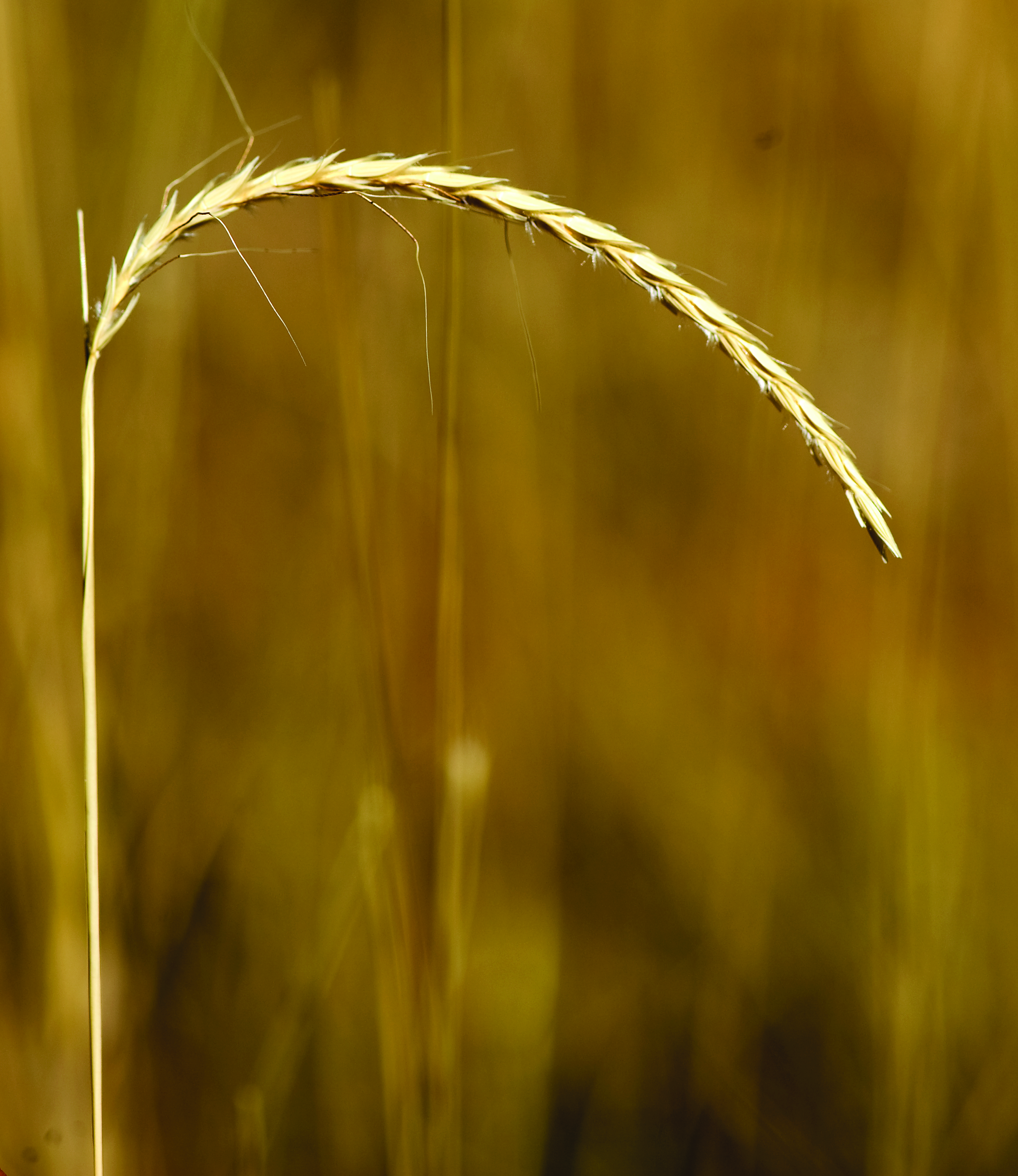White grass
Some of the important grasses found in the Kimberley that are often discussed include Mitchell grasses (Astrebla spp.), blackspear grass (Heteropogon contortus), ribbon grass (Chrysopogon fallax), three-awn grasses (Aristida spp.) and spinifex (Triodia spp.). This article will look at another commonly found native grass, but one not as widely discussed ─ white grass (Sehima nervosum).

Key characteristics
Some key characteristics of white grass (also known as rat’s tail grass) are as follows:
- perennial (lives for more than two years)
- tussocks grow up to 1 m high
- commonly found on sandy, loam and red clay soils but not on deep sands (dunes) or cracking clays
- leaves are a light green-bluish colour when plant is growing
- as plant matures, it whitens (hence the common name)
- at end of growing season, leaves are brittle and coarse
- old growth is very powdery when rubbed through hands
- easily identified by the angled, concave scar left at the tip of the flowering stem when the seed head is detached
- where fire is absent, moribund growth forms a thick mat on the ground, which seems to reduce germination and establishment of other grasses and forbs (non-grasses)
- white grass is found across Kimberley, NT and QLD (Avh.chah.org.au, 2019), however it is less common where the average annual rainfall is below 400 mm.
Value to the grazing industry
It is not uncommon to find grazed white grass plants in the rangelands, however on the whole, white grass does not seem to be preferentially grazed by stock. Wheaton (1994) described white grass as a ‘fairly coarse grass low in palatability and nutritional value, but grazed as stocking pressure increases’. Even after fire, cattle do not seem to target new growth, unlike for black speargrass where they tend to return constantly to the same burnt patch, mowing down any that becomes available.

White grass is regarded as a desirable perennial grass within a number of Kimberley pasture types including white grass/bundle-bundle, black spear and Tippera tall grass pasture types (Ryan et al., 2013). In the productive ribbon grass or bluegrass alluvial plain pasture types, white grass is considered to be of intermediate value (second choice grass for stock). White grass is not rated as an undesirable species in any of the Kimberley pasture types; the main undesirables are three-awn grasses.
Increasing observations in WA
Information from the Western Australian Rangeland Monitoring System (WARMS) shows that the number of Kimberley sites where white grass was recorded, increased from 54 for the 1994/96 assessment period to 83 for the 2015/17 assessment period. Not only did the number of sites with white grass increase between these assessments, but also the median frequency of white grass on those sites where it was initially present (from 8.5% to 23%). Considering changes at these sites individually, about 52% were judged to have increased in white grass frequency while only 17% decreased between the two assessments.
Figure 1 illustrates the increase in frequency of white grass at a West Kimberley site on a ribbon grass pasture type (sandy loam soil). While this site should not be taken to represent all other WARMS sites where white grass has been recorded, it does show a dramatic increase in Sehima nervosum frequency from the first assessment in 1996 to the most recent in 2017, by which time almost all quadrats contained some white grass. The graph also shows ribbon grass and curly bluegrass (bundle-bundle), both of which are desirable perennial grasses. There has been a noticeable decline in the frequency of curly bluegrass since 2011, making it important to monitor this site carefully. Wet seasons over the period 2011-17 were mainly average or above average, as measured by rainfall totals.

There is no obvious or simple explanation for the general increase in white grass frequency that has been observed across the Kimberley WARMS sites, with little available research on how rainfall, fire and grazing may affect this species. One possible contributing factor already well documented, is the good run of seasons experienced across the Kimberley since the mid-1990s.
Watson and Novelly (2012) assessed changes at WARMS grassland sites (306) between 1994 and 2010 and judged that there had been a transition in vegetation, from one relatively stable state to another, at 11% of the sites. Transitions at some of these sites involved increases in white grass, in conjunction with increases or decreases in other key grass species.
What does this mean for the pastoral industry?
Although white grass is considered to be of limited value for pastoral production, it is a perennial grass with good soil-stabilising properties. An increase in white grass should have no major impact on the pastoral industry unless this has a deleterious effect on other more palatable species, such as ribbon grass, bundle-bundle, curly spinifex, kangaroo grass (Themeda triandra) and perennial sorghum (Sorghum plumosum).
At this stage there is no evidence to suggest that an increase in white grass is having a negative impact but it is important that we continue to monitor the situation. One important thing managers can do is to keep a close eye on the level of use of the more palatable grasses present in their pastures. If grazing of these plants is poorly controlled it is likely that over the years, they will be weakened and gradually lost from the system.
If anyone has further information to offer on white grass, we would be glad to hear your thoughts.
*Frequency is the percentage of quadrats at a site in which a given species is observed. One hundred quadrats are recorded during each WARMS site assessment.
References
Avh.chah.org.au. 2019, AVH | The Australasian Virtual Herbarium. [online] Available at: [Accessed 18 Mar. 2019].
Ryan, K., Tierney, E., Novelly, P. and McCartney, R. 2013, Pasture condition guide for the Kimberley. Department of Agriculture and Food, Western Australia.
Watson, I.W. and Novelly, P.E. 2012, Transitions across thresholds of vegetation states in the grazed rangelands of Western Australia. The Rangeland Journal, vol. 34, pp. 231-238.
Wheaton, T. 1994, Plants of the northern Australian rangelands. Darwin, NT: Northern Territory Government.